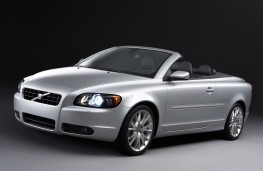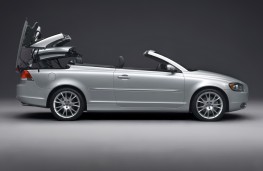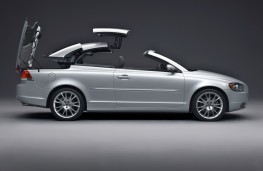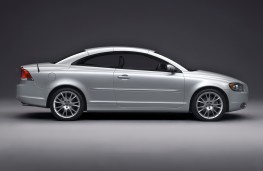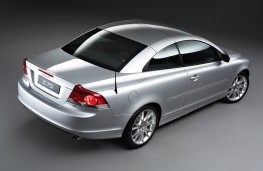IN my view one of the most desirable Volvos was the C70 and it is celebrating its 20th birthday.
If any car deserves modern classic status, then it is this one.
The C70 represented a new niche in an important period for Volvo, a project that was driven by enthusiasm and a love of cars by a small and passionate team.
When the Volvo C70 was first unveiled during the Paris Motor Show on September 30, 1996, it was not only the slender body that was brand new.
It was Volvo's first "proper" coupe since the 1800 model, and the first time Volvo had cooperated with engineering firm TWR on a new car.
Furthermore, the roof was retractable and the car was to be built partly using new methods at a newly opened plant in the Swedish town of Uddevalla.
At the beginning of the 1990s, Volvo decided to expand its passenger car programme with a coupé and a cabriolet.
The two versions would be developed in parallel and built on the technological base of the 850 model.
A small project group was formed in early 1994 and Hakan Abrahamsson was appointed project manager.
Volvo had limited experience in developing such a characteristically niche product, and it wasin quite a rush.
Volvotherefore chose to co-operate with the British engineering firm TWR, Tom Walkinshaw Racing, already involved with Volvo's racing team in the BTCC.
"Without a doubt this was the most fun car project I've been involved with," Hakan Abrahamsson says today.
Volvo wanted a project manager who was a little younger- preferably one who would be under 40 by the time the car was unveiled.
The team had just a couple of months during 1994 to define the project, and they got to work almost straight away with a comprehensive competitor analysis.
The project group had to cancel their holidays and instead headed to the south to France to rent and try out coupés and cabriolets from their key competitors.
Since they were supposed to be on holiday, they were allowed to bring their families, which turned out to be an unexpected success.
Several comments were noted that would not have emerged if it hadbeen only car designers who had analysed the competition. This was hugely beneficial.
The project group were given an unusually free hand in terms of shaping the car, and head of design Peter Horbury wanted to change the idea that Volvo design was angular and boxy.
Horbury, was clearly enthusiastic about the new language of design represented by the C70: "We threw away the box but kept the toy inside," he said after the first media viewing, where he had driven a Saffron Yellow C70 onto the stage.
The front clearly linked to Volvo, while the rest of the body was significantly curvier than anything previously released by the company.
It was crucial that the speed matched the appearance. The C70 was therefore launched exclusively with five-cylinder turbo engines.
The strongest engine, at 2.3-litres and 240bhp, was shared with the Volvo 850R.
Despite the C70 being very much an emotional car, where the design governed its function, there was plenty of room for four people and their luggage.
The news that the Volvo C70 Coupé would be joined by a cabriolet was announced at the same time as the coupé was launched.
The C70 Cabriolet was unveiled one year later and it was the first convertible Volvo of the modern era.
The Volvo C70 Coupé was manufactured until 2002, while the C70 Cabriolet lived on for a further three years until April 2005.
By this time, 76,809 C70s had been built, of which 27,014 were coupés and 49,795 cabriolets.

